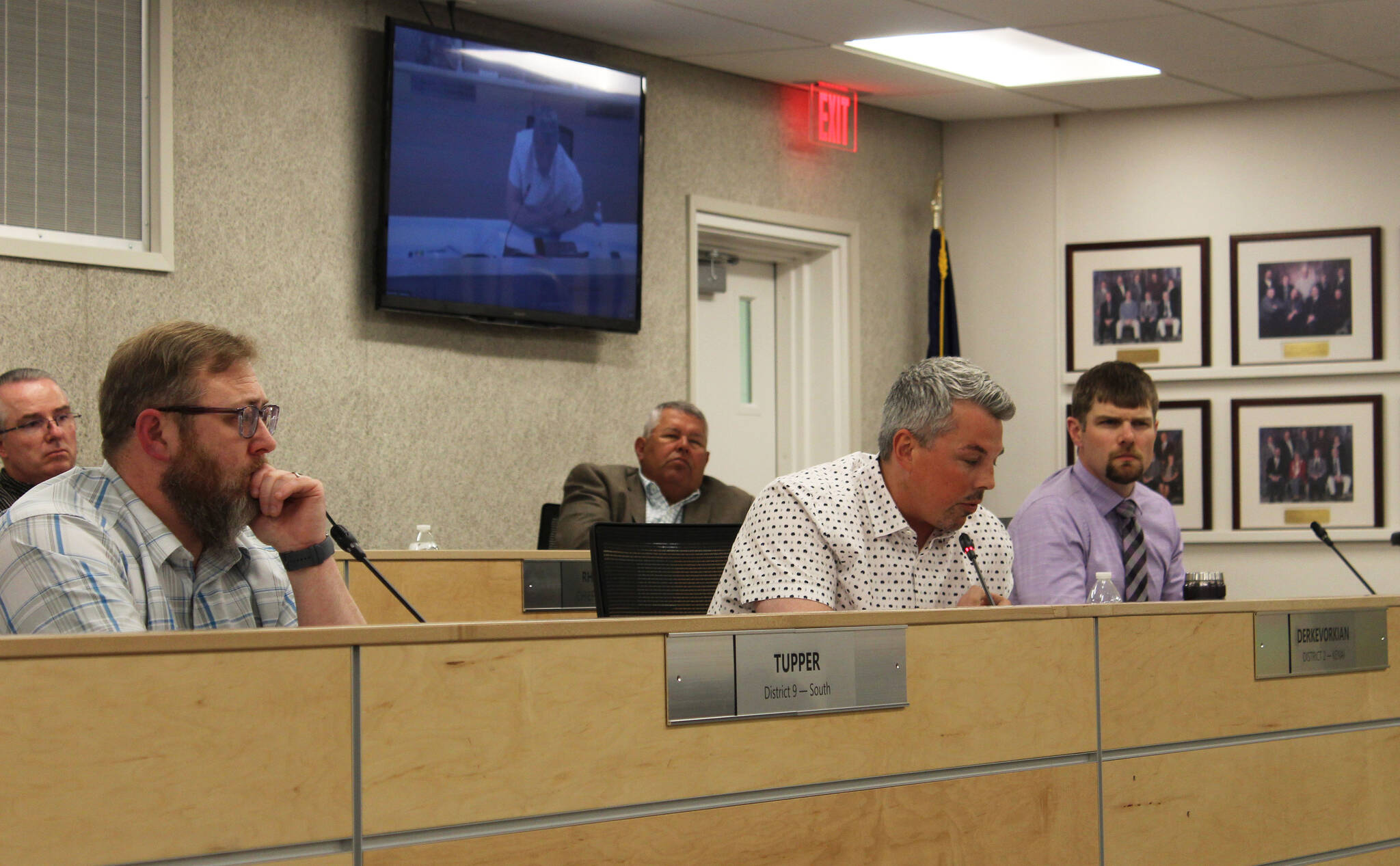Kenai Peninsula voters will decide this fall whether to add two more seats to the assembly and board of education under ballot language approved by the Kenai Peninsula Borough Assembly on Tuesday. The vote marked the end of a lengthy legislative reapportionment process, which kicked off in January when both the assembly and the Kenai Peninsula Borough School District Board of Education were formally declared to be malapportioned.
The goal of reapportionment is to get the population of each assembly and board of education district as close to a “target population” as possible in light of new population data gathered through the 2020 decennial census.
Both the borough assembly and the board of education are currently composed of elected representatives from nine single-member districts across the borough. Geographies represented by those districts include Kalifornsky, Kenai, Nikiski, Soldotna, Sterling/Funny River, Seward/East Peninsula, Kasilof/Central, Homer and South Peninsula.
Data collected during the 2020 decennial census show that some areas of the Kenai Peninsula are gaining new residents at faster rates than other areas, which skews how they are represented on the assembly and on the board of education.
When Kenai Peninsula voters head to the polls this fall they will pick between two options for the makeup of the assembly and board of education. The first plan, Plan 1, would retain the current model of nine single-member districts. The second plan, Plan 2, would consist of 11 single-member districts. Under both plans, voters in each district would elect one assembly member and one board of education member.
A committee tasked with preparing reapportionment plans for both bodies recommended in its final report that borough residents pick one of two plans when they vote in the Oct. 4 borough election.
Under the newly proposed nine-district plan, no district would deviate from the target population by more than 5%. Under the proposed 11-district plan, no district would deviate from the target population by more than 1.75%. The mean percent deviation for the nine-district plan would be 2.21%, compared to 0.78% for the 11-district plan.
Assembly member Richard Derkevorkian, who represents Kenai, successfully amended the ordinance to include in the ballot language the estimated cost to the borough to add two new assembly members. Assembly member Tyson Cox, who represents Soldotna, tried to amend the ordinance to say that conceptual maps would not be included in the borough’s voter pamphlet. The amendment failed.
According to a borough website that details the reapportionment process, the two conceptual plans accepted by the committee represent “how districts could be mapped if that plan was approved by voters.” They do not represent final boundary lines, which will be drawn by a redistricting committee once a plan is chosen.
The need to reapportion the borough’s assembly and board of education districts comes from Alaska statute, which requires the composition and apportionment of assemblies to comply with the equal representation standards of the U.S. Constitution. The once-in-a-decade process is done using fresh population data produced by the decennial census.
More information about the reapportionment process can be found at reapportionment-kpb.hub.arcgis.com.
Reach reporter Ashlyn O’Hara at ashlyn.ohara@peninsulaclarion.com.

